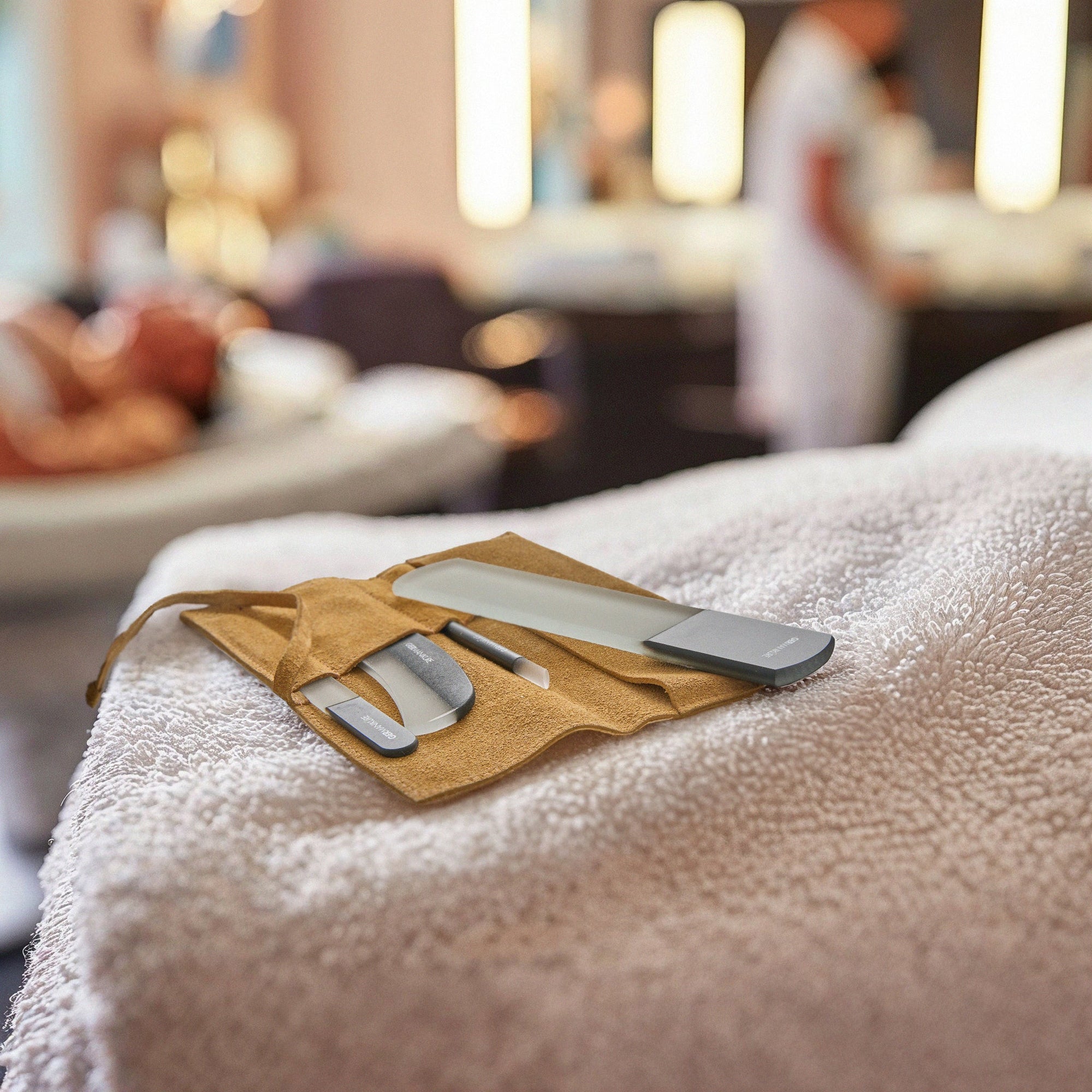Doing your nails at home is a fantastic alternative to salon manicure or pedicure. You can do it on your own schedule and make it a special part of your self-care ritual. The right tools are a must, but having the tools and knowing how to use them are only part of the process it's just as important to learn how to properly clean nail tools.
When you get a professional manicure at a salon, you might notice manicurists disinfecting nail tools with harsh chemicals like Barbicide. That's because they have to follow regulations based on their state, or even their town, in order to prevent the spread of contaminants among their clients. For your own tools, unless you’re dealing with very specific issues, it’s likely that you don't need anything that strong. The first thing to do is to consider what your individual needs are. Sanitizing, disinfecting, and sterilizing are all different processes with different purposes and results.

How to sanitize nail tools
In terms of how to clean nail tools, sanitization is the mildest process. The purpose of sanitizing something is to lower the number of microbes on its surface to safe levels. Sanitization focuses more on bacteria than on viruses, so it’s likely that this is all you need to do, especially if you’re the only one using your nail tools and you don’t have any kind of fungus or infection. Often, a good scrub with warm water and a gentle soap is enough to accomplish this. Make sure to do this between each use in order to avoid any kind of residue build-up. This is the best way to ensure that your nail tools last a lifetime. For a little extra piece of mind and to inhibit any kind of microbial growth, you can also soak them in white vinegar.
How to disinfect nail tools
When you disinfect something, you kill most of the bacteria, viruses and fungi on it. This is an important step to take if you're sharing your nail tools with family members (not recommended--best to keep your nail tools just for you), or if you have an infection or fungus. If you do (no judgment--these things happen to the best of us), you'll want to avoid making the problem worse, or spreading it from your toes to your fingers or vice versa.
The first thing to do is to remove any visible debris or residue from your tools by washing them with warm water and a gentle soap. This is important because the disinfectant solution needs to be able to come into contact with the entire surface of each tool and any residual debris can keep that from happening. Once you’ve done that, submerge your glass and metal tools in a disinfectant soak 70% isopropyl alcohol works great. Pour some into a bowl (enough to completely submerge all tools) and let them sit for about 5 to 10 minutes. You can do them one at a time, or all at once, as long as there’s enough room that none of them are touching each other—remember that the goal is for the disinfectant to come into contact with all parts of the surface of each tool (to this effect, scissors should be open). Take them out and let them air dry on a paper towel. Make sure they're completely dry before you put them away or use them again.
How to sterilize nail tools
Sterilization is a step beyond disinfection. Disinfecting nail tools reduces the amount of bacteria on them to safe levels, but sterilizing nail tools removes all microorganisms. You’ll definitely need to know how to sterilize nail tools at home if you share your nail tools with a lot of people (again, not recommended—let’s leave that to salons). But if you know your nail tools have come into contact with harmful viruses, bacteria, or fungi, or if you’re already suffering from a toenail fungus, you’ll definitely want to know how to sterilize pedicure tools at home. It’s simpler than you might think: all you have to do is boil them for about 30 minutes.
If you’re wondering how to clean a nail file (a glass one don’t try this with an emery board. Although, seriously, stop using emery boards, if you haven’t already, they are ruining your nails), this is a great option. It’s a good idea to give tools, including nail files, a wash in warm, soapy water before boiling them in order to remove any residue or debris.
SUNgienic nail files
Another thing to consider is SUNgienic nail files. Germanikure has a process of coating their glass nail files in a special chemical that reacts with UV light and direct sunlight to kill most bacteria, fungi, and viruses. If you’re as lazy pressed for time as I am, it’s nice to be able to leave your nail tools outside (I like to put them in a sunny spot on top of a paper towel) for a while, then flip them over and leave them for a little while longer. (Note that the SUNgienic technology is still patent-pending and has not yet been approved by the FDA. How cutting-edge!) Germanikure’s SUNgienic glass line can be purchased in the form of moon files, pedicure bars, nail files, and waffle files, and it’s definitely a factor to consider when thinking about what to add to your personal collection of nail tools.





